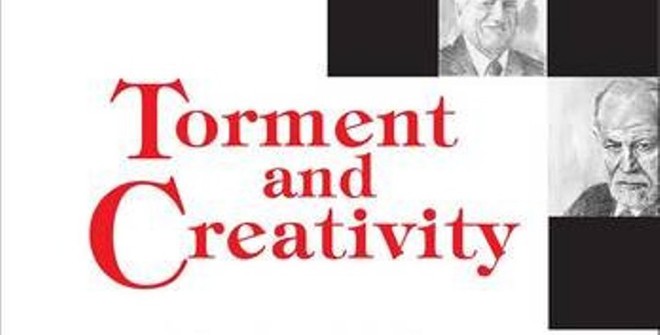
This out-of-the-ordinary books explores the fusion and friction between the body, heart, soul and mind

In contrast to the first word in the title, this book is a treat to read.
Comprising six previously unpublished essays and twelve previously published (in a leading newspaper) but substantially expanded articles, with extensive citations and research, Shamim Ahmad has woven them together to create a seamless study.
To categorise the book as being ideal for the general reader is to stress its universal relevance for all literate adults. It is not to imply that the preparatory effort or its resulting text is too light for the specialist. Here is a finely balanced blend of investigation, reflection and opinion relevant for both serious amateurs and seasoned professionals.
At the outset the author lists five principal sources that, in the view of many scholars, inspire and shape creativity. Attempts to address a deficiency -- real or imaginary; hostility to one’s father -- the Oedipus complex and lack of love in childhood -- the Phaeton complex. Extreme swings of mood, from elation to depression -- the bipolar disorder. Cognition of universality of pain. At the same time, the author states that: "Neurosis by itself does not make anyone a great artist, nor is every genius a neurotic." Though, later on page 118, referring to Faiz who did not display any of the first four sources (only the fifth), the author declares with engaging conviction that: "Most writers have been quite neurotic, if not mad "!
Interesting quotes are chosen with care. Ezra Pound on genius: "The capacity to see ten things where the ordinary man sees one ". Leo Tolstoy on self:
"There can be only one permanent revolution -- a moral one: the regeneration of the inner man." Allama Iqbal’s Urdu couplet, particularly pertinent for some in the Pakistan of 2014: "People advise me to eschew music/music is my religion, music is my faith."
The selection of poets and writers, and even two music composers, aptly reflects the duality of the western and South Asian cultures and languages, which shape the sensibility of a contemporary educated Pakistani. In nine chapters, excluding the Introduction (appreciatively written by the late Dr Mohammad Ali Siddiqui, President, Progressive Writers Association) and the Foreword, the book dwells, at varying length, on 17 eminent western figures, 2 pioneering western psychologists, 4 historic-dramatic characters (Brutus, Mark Anthony, Hamlet, Macbeth, and 10 major personalities of the Urdu-Persian tradition. Despite the considerable numbers, the text identifies the principal facts and speculations about each personality relevant to the theme.
John Keats: deeply pained, physically by disease, mentally and emotionally by harsh criticism of his poetry, psychologically by unfulfilled love. He dies at the age of only 25 years. To belatedly be acknowledged as possibly the greatest of the romantic poets. Whereas T. S. Elliot lives to the ripe age of 77 years, to be recognised in his lifetime itself as a pioneering modernist of literature even as he remains pre-occupied with the debilitating, draining illness of his second wife Vivien. While his divorced first wife Valerie remains so dedicated to him and his work that she collects and publishes his letters and writings. Sahir Ludhianvi: harmonizing "..the discordant notes of good taste and commercialism," scaling the peaks of acclaim, loving Amrita Preetam and being loved in return, yet succumbing to four phobias -- gamophobia (fear of marriage), gynephobia (fear of women), monophobia (fear of being alone) and aerophobia (fear of flying). Shafiqur Rahman, applauded by Krishan Chander for the dazzling range of his writing, including his famous sense of humour. alas, loses two of three beloved sons to suicide, and falls from "..the heights of glory to the abyss of melancholy ". Allama Iqbal: the robust, prolific poet-philosopher. Yet afflicted by several ailments which included: heart and renal diseases, gout, immature cataract, liver congestion, bronchidal asthma, shortness of breath, laryngitis. Worst of all, in the author’s view, supported by his study: "Iqbal was not a supporter of emancipation of women. He did not trust women’s abilities…"
Four questions are provoked by this intriguing book. While there is considerable evidence to establish the nexus between suffering and creativity: how do many who go through extreme adversity, nevertheless transcend their hardship to create, singly or together (as in the case of anonymous artisans) enduring masterpieces?
Is there an element of self-indulgence, self-centredness in letting intensely painful experiences dominate one’s thoughts, feelings and behaviour? Does a person induce and aggravate her or his own torment? Do the specific peculiarities of a culture and a society make a difference to the suffering, and to how that suffering is handled by the affected artist?
While being an erudite exploration of an extraordinary subject, this should-be-read book encourages one to learn and think further. On the inexplicable fusion and friction between body, heart, soul, brain and mind that produce the mystery of creativity.